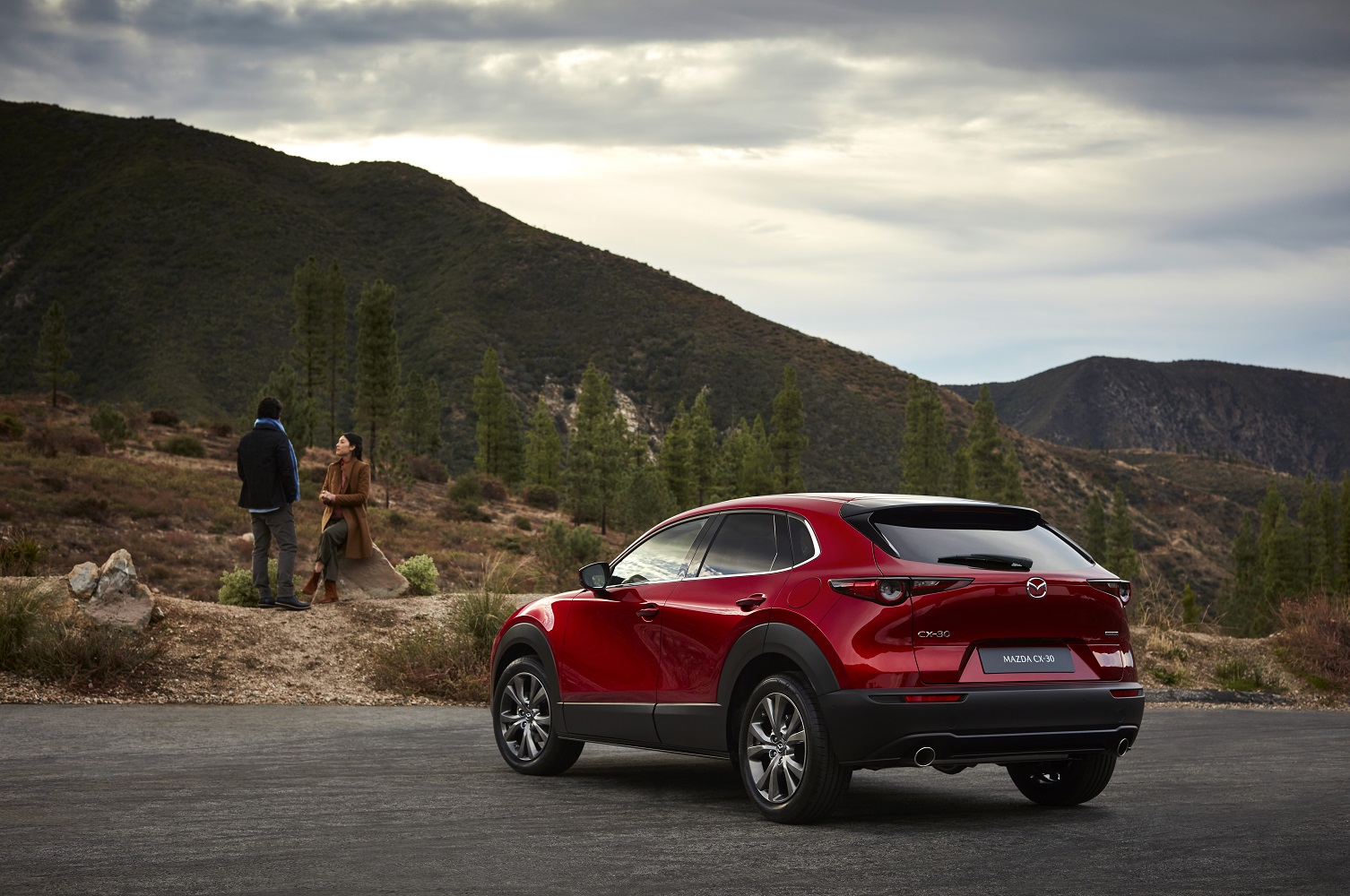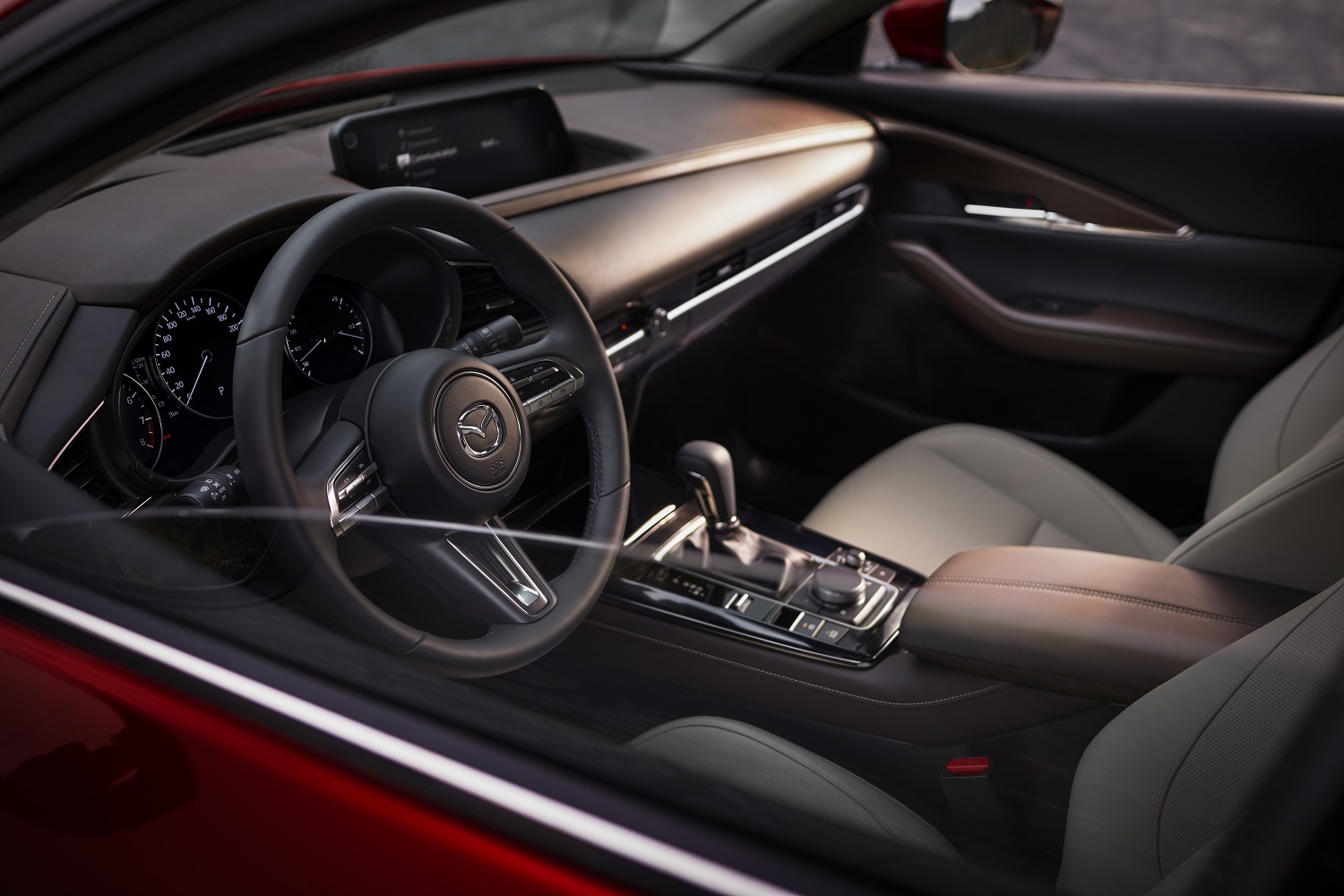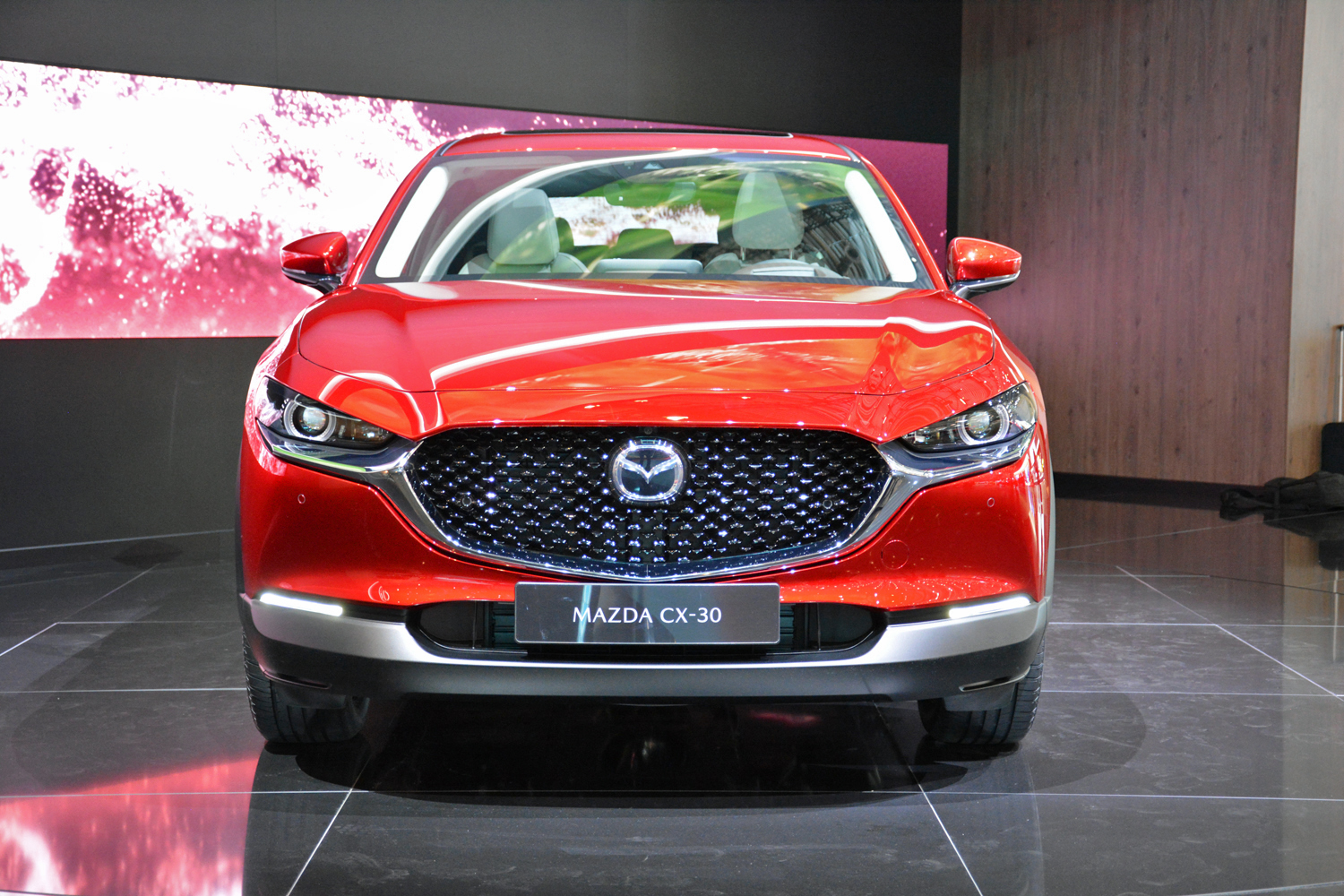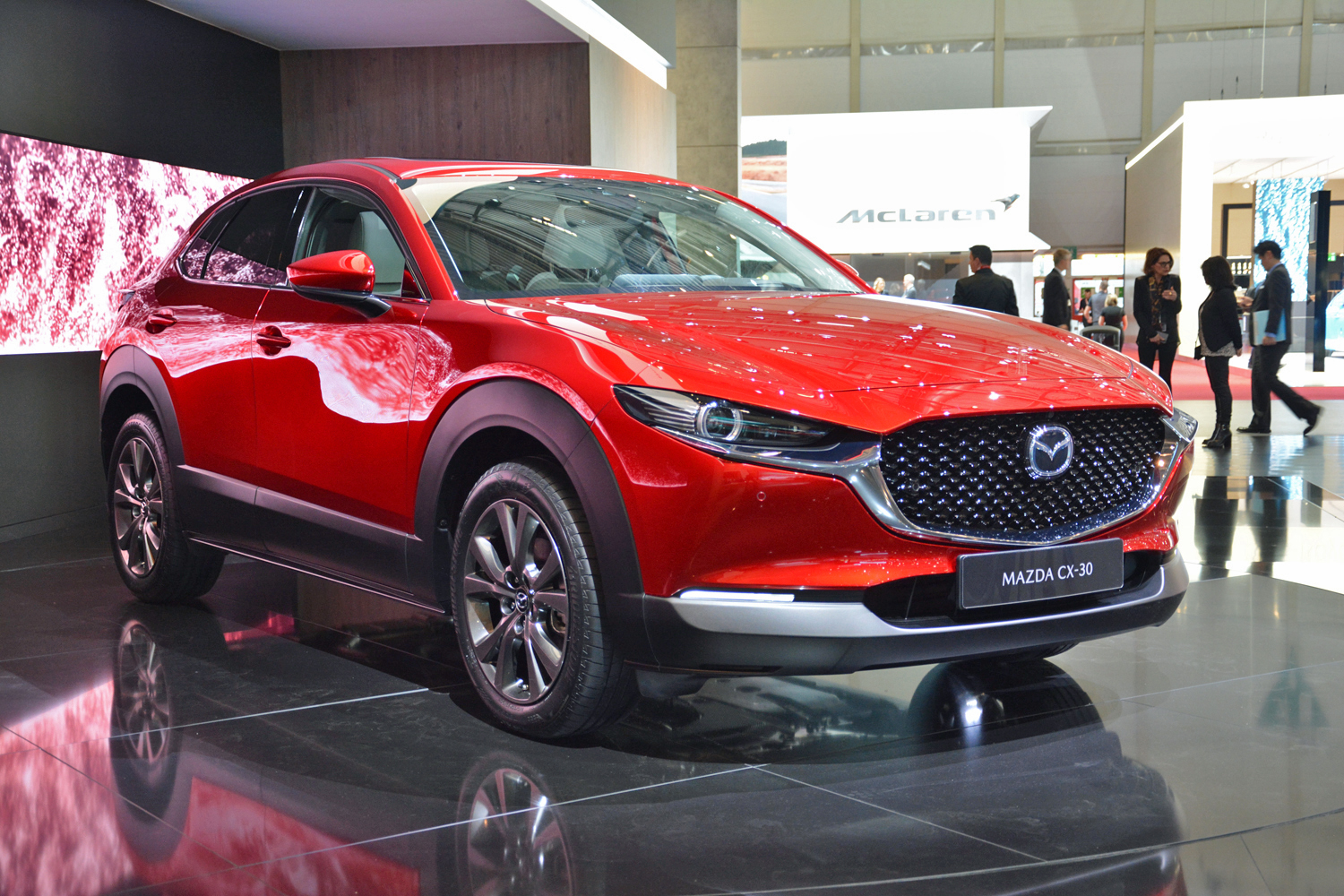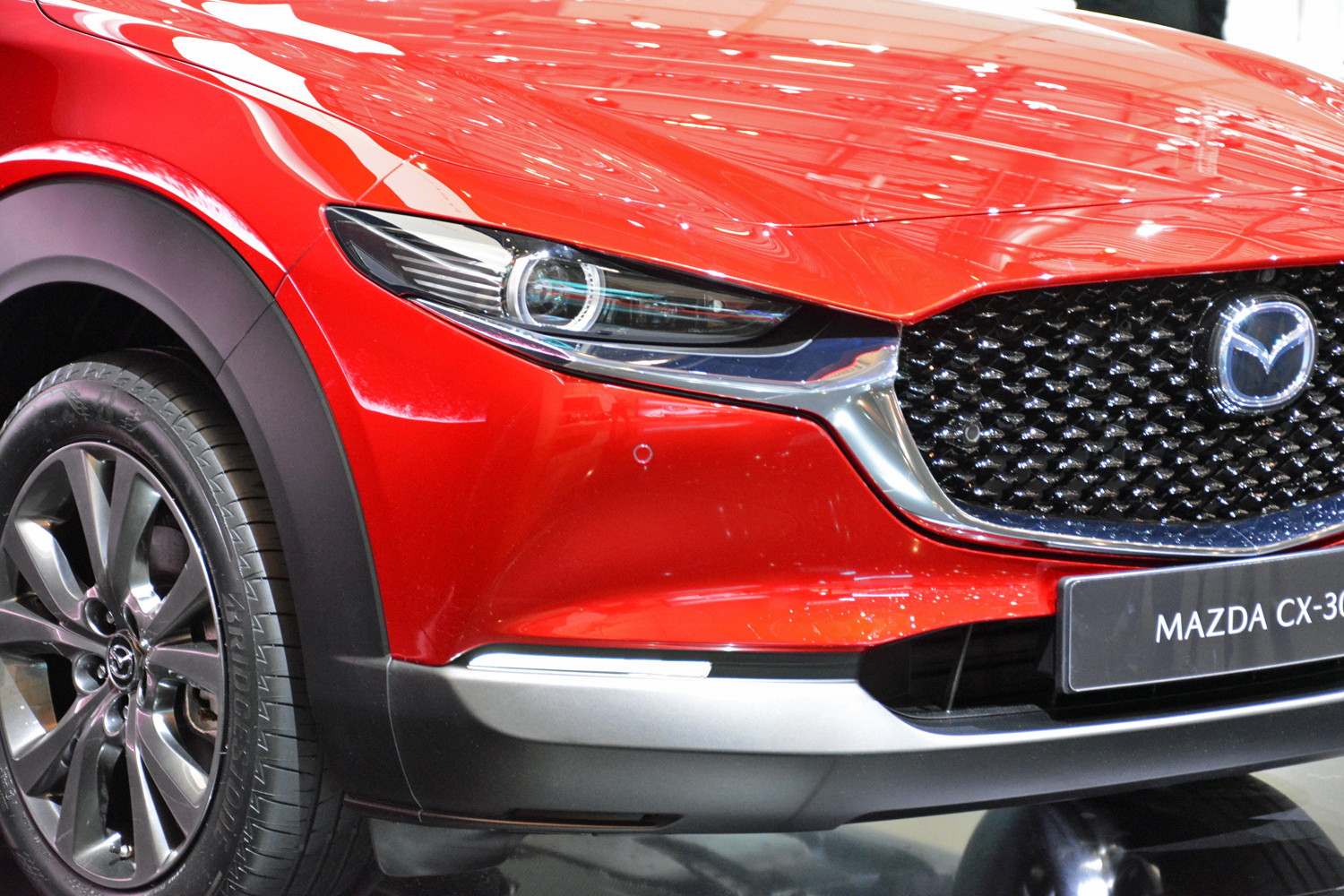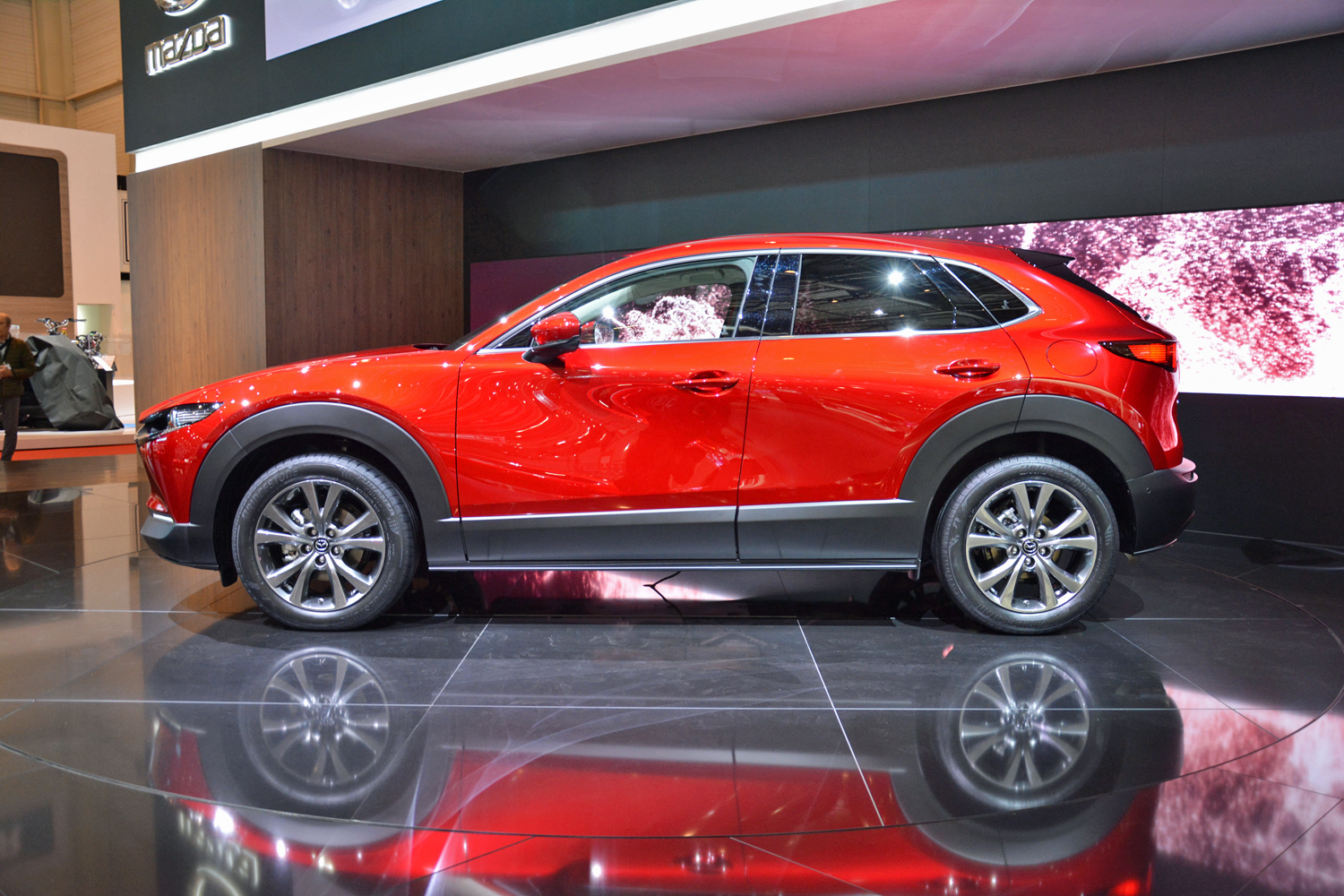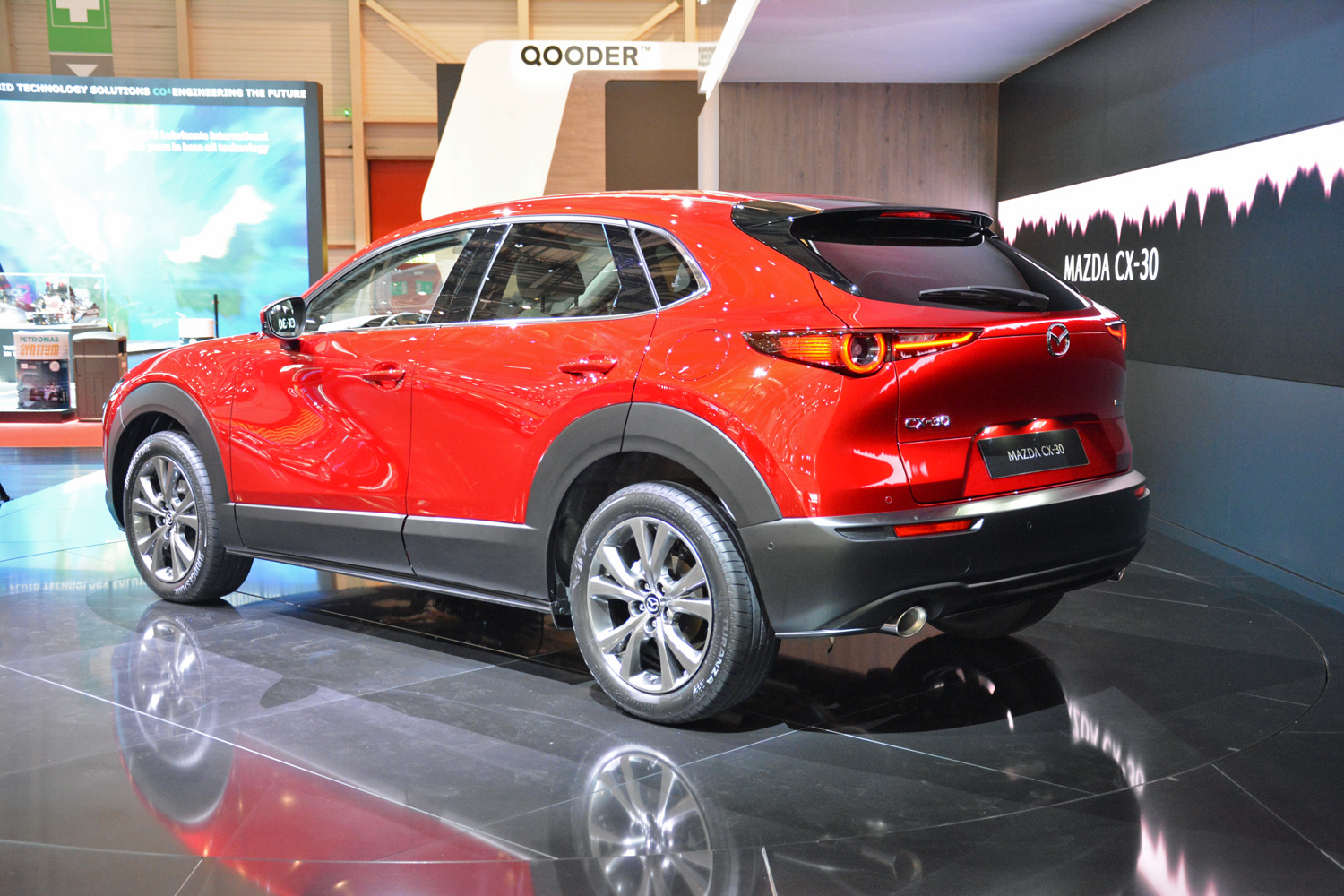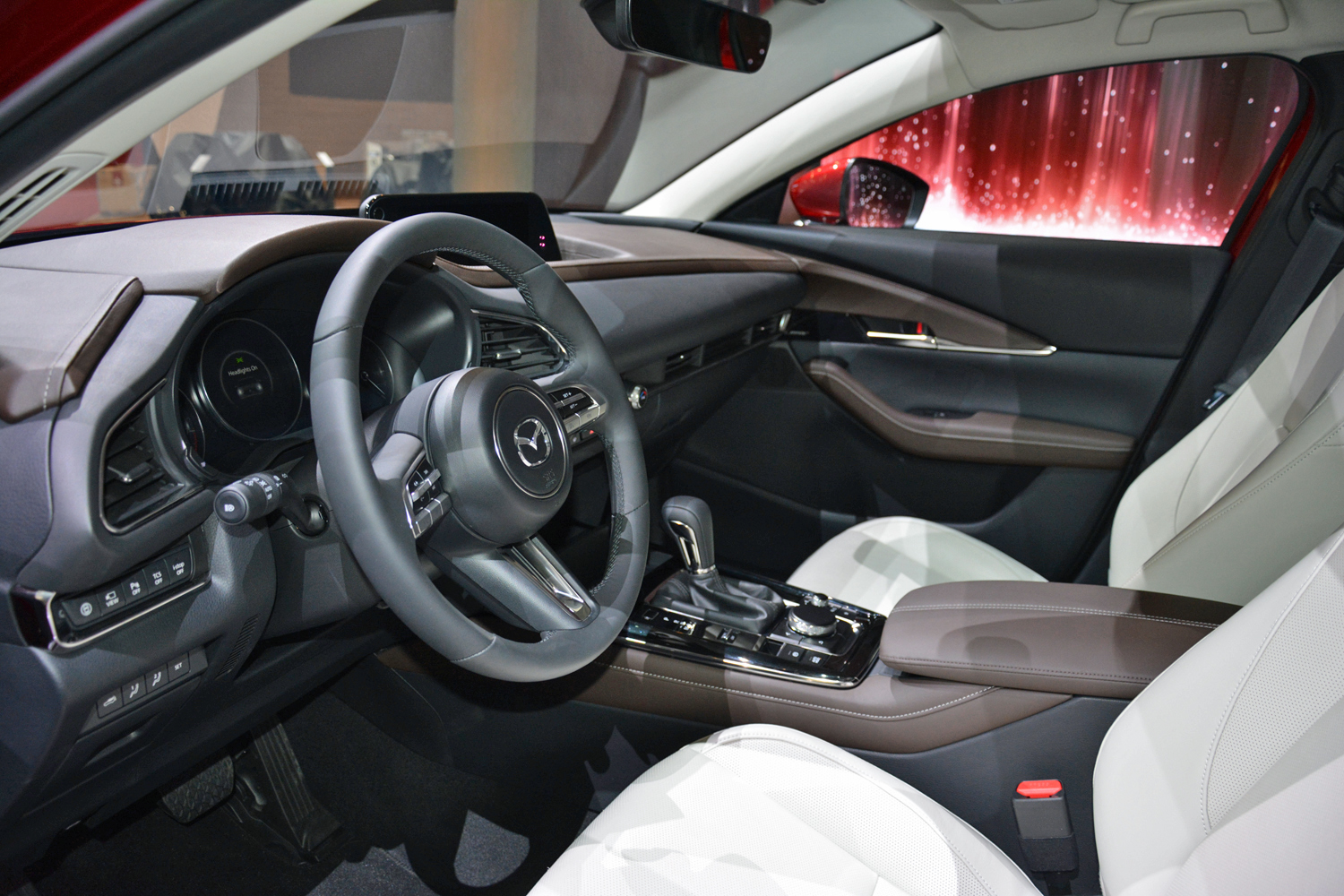Car buyers love crossovers, and the automotive industry’s brightest minds agree the conventional, four-door sedan will never shine again. That’s why we weren’t surprised to see Mazda introduce a new high-riding model named CX-30 that fills the small amount of space that separates the existing CX-3 and CX-5. The Japanese company’s newest crossover made its debut during the 2019 Geneva Auto Show.
The materials and the technology found in the cabin reflect Mazda’s upmarket push. The CX-30’s list of options includes a driver monitoring system that detects fatigue by using a camera and an infrared LED to monitor how wide the driver’s eyes are open at any given time, the number of times he or she blinks, and the face’s angle. It emits audible and visual warnings if it detects the driver is falling asleep. Semi-autonomous technology that assists the driver in a traffic jam is also offered at an extra cost. Both features trickled down from bigger, more expensive cars.
The dashboard is dominated by an 8.8-inch screen which displays the infotainment system. Don’t poke it; it’s controlled by a knob located behind the gear selector on the center console.
Viewed from the outside, the CX-30 immediately stands out as a member of the Mazda family with an elegant, upscale design that borrows many cues (including a shield-shaped grille) from the recently introduced 2019 Mazda3. Sculpted flanks reduce visual mass, while ever-popular plastic cladding adds a rugged touch to the design.
While Mazda hasn’t released technical specifications for the American market, or even confirmed that an American-spec variant is in the works, it noted the CX-30 was developed to offer a variety of four-cylinder engines. One is a 2.0-liter unit equipped with cylinder-deactivation technology that turns the four into a two-cylinder under light load conditions, like when cruising on the highway, to save fuel. The company’s futuristic SkyActiv-X engine also fits in the CX-30. Both units receive a hybrid boost to increase fuel economy and performance. Front-wheel drive is the default configuration, and all-wheel drive is offered at an extra cost.
Mazda will release additional information about the CX-30, including pricing and information, before the end of 2019. Since it slots between the CX-3 and the CX-5, we expect pricing will start in the vicinity of $22,000.
Editors' Recommendations
- Pint-sized 2021 Kia Seltos crossover could be a great tech value
- Mazda’s MX-30 challenges the commonly accepted definition of an EV



